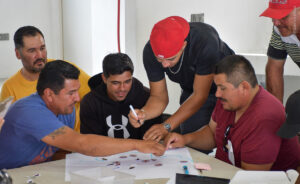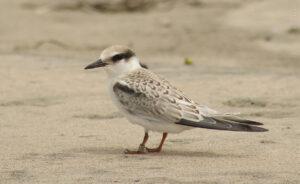Scientific knowledge, systematic work and dedication are essential to achieve conservation goals. Monitoring the populations of a migratory species in a timely manner, guarding a large maritime area to prevent illegal fishing or gradually restoring a reef, besides being highly challenging activities, requires the best technology available. In the absence of such equipment, many of these efforts would remain as mere intentions and their impact would not last.
Our conservation work in northwestern Mexico has always been linked to technology. The use of technological resources for monitoring aims to increase fishing and environmental compliance in coastal and marine environments, both in their zone of influence and in fishing areas.
The use of technology for environmental and conservation purposes is based on a diagnosis of the conservation object. It is essential to work with the institutions involved, to provide training to authorities and residents and, without a doubt, to secure financing for the medium and long term. This ensures that investments in technology and infrastructure are possible to reach the expected results.
Currently, Pronatura Noroeste is working with technological resources in 16 Natural Protected Areas (NPAs). To a large extent, this is oriented towards monitoring, supervision, inspection and surveillance in areas exposed to overexploitation and illegal fishing. The use of radars and systems allows us to record the behavior of vessels in these areas, among other things.
The use of technology has allowed us to collaborate with entities such as the National Commission of Natural Protected Areas (CONANP), the National Commission of Aquaculture and Fisheries (CONAPESCA), the Federal Attorney’s Office for Environmental Protection (PROFEPA), and the Secretary of the Navy (SEMAR). All the information gathered is provided to the corresponding authorities so that they have the necessary data to effectively enforce environmental and fishing laws in the protected areas.
The M2 system, also known as Marine Monitor, consists of a long-range camera, radar and software for registering vessel movements within certain areas, in order to detect possible suspicious activities, such as illegal fishing. In addition, we have an Edge 130 model drone, with a wingspan of 130 cm, a cruising speed of up to 100 kph, and capable of reaching a maximum altitude of 3,650 m. This tool is useful especially in areas where there is a high risk of illegal fishing, and to verify what has been detected by other technologies.
Among the species protected with surveillance technology are the ones living inside the Loreto Bay and Cabo Pulmo National Parks, such as the Chocolate Clam (Megapitaria squalida) fisheries in the Altata-Ensenada del Pabellón complex, as well as the Red Sea Urchin (Mesocentrotus franciscanus) and the Red Lobster (Panulirus interruptus) in the Gulf of California, among many others.
Collaborate with us through technological projects for conservation and be part of wildlife recovery.
















